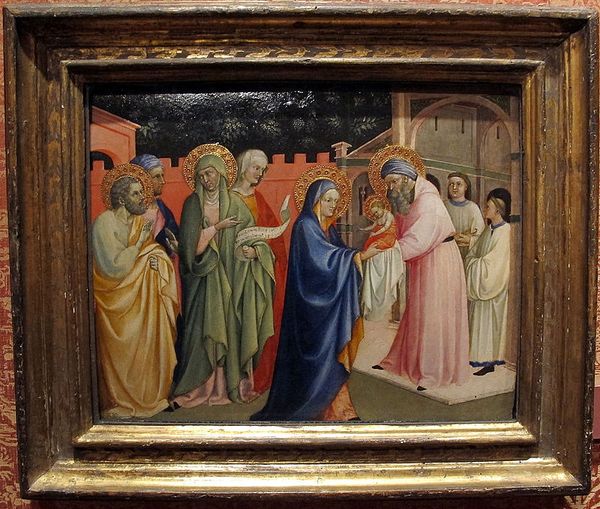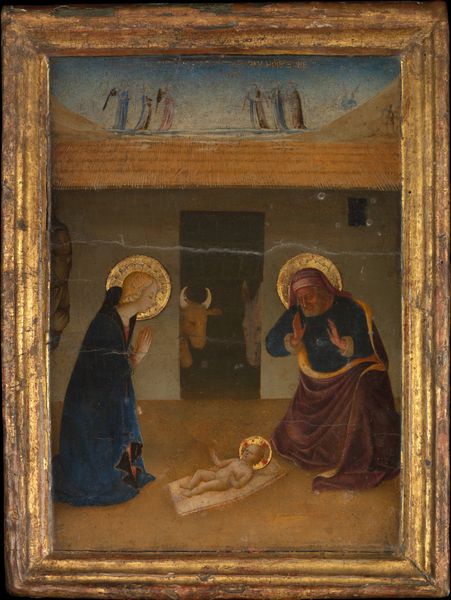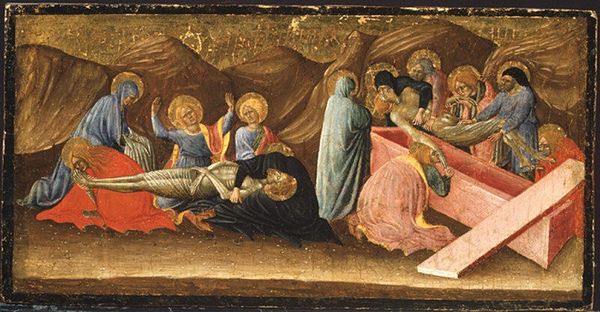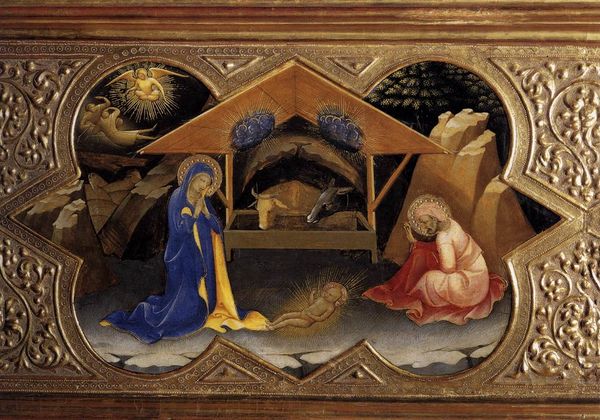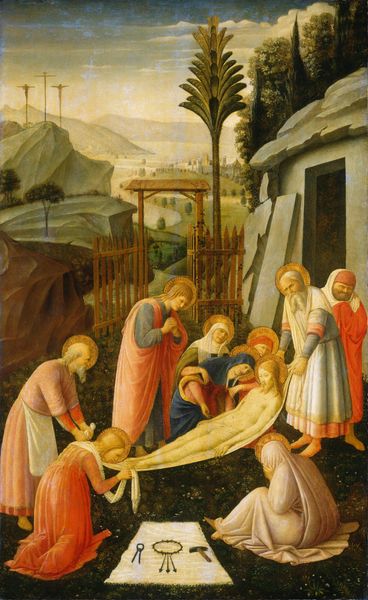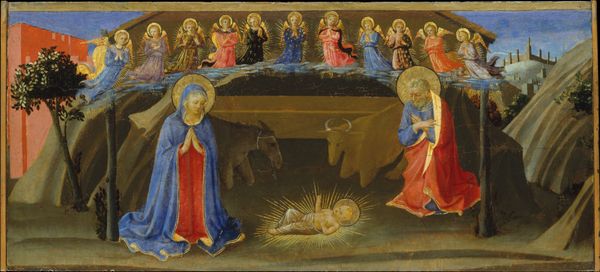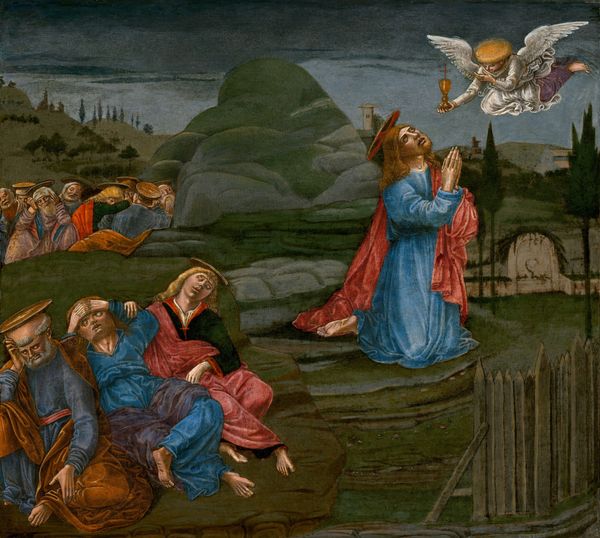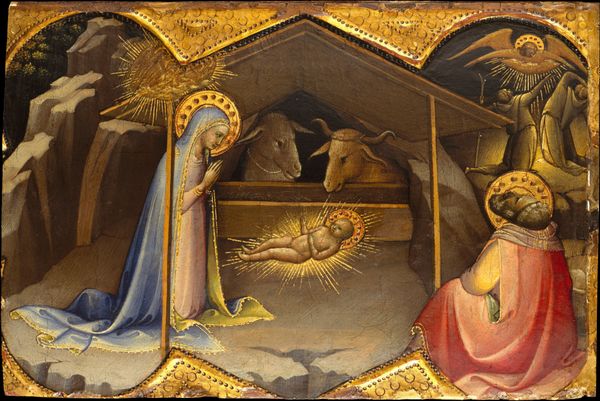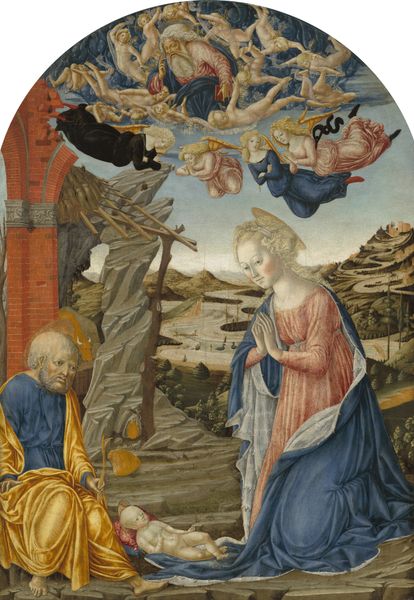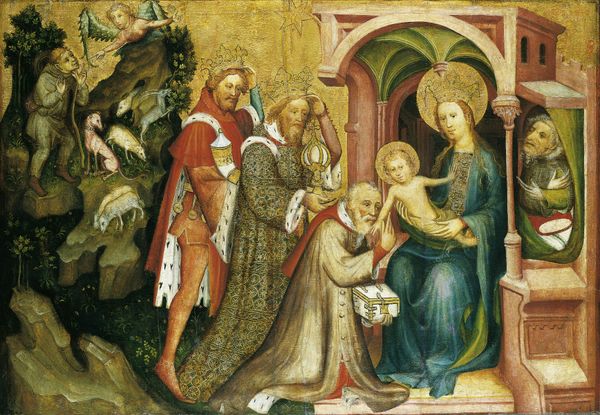
tempera, painting
#
gouache
#
water colours
#
narrative-art
#
tempera
#
painting
#
perspective
#
figuration
#
oil painting
#
history-painting
#
italian-renaissance
#
early-renaissance
#
miniature
#
watercolor
Copyright: Public domain
Editor: Here we have Giovanni da Milano’s "Nativity" from 1370, part of the "Da Spedale Della Misericordia, Predella 1" series, rendered in tempera. I'm struck by the architectural structure that contains the holy family. How would you describe the use of space and form in this piece? Curator: Indeed. Note how the composition employs a juxtaposition of planes, creating a layered effect that guides the viewer's eye. The structure serves as a framing device, simultaneously defining and confining the scene. Consider the linear perspective, although rudimentary, attempting to create depth. The gold background flattens the picture plane, challenging spatial recession. Do you observe how color further defines the forms and creates separation? Editor: I see how the muted tones of the architecture contrast with the brighter hues of the figures. What does the specific arrangement of these elements suggest? Curator: The carefully arranged figures, each contained within their own colour field, are more iconic than lifelike. Their postures and gestures contribute to the narrative, yet remain subordinate to the overall formal structure. Consider also the textural variation between the smooth gold and rough-hewn building elements and their relationship with the symbolic rendering of light and shadow to denote form and volume, but there's an element of stylistic naivety at play too. What might you add? Editor: That tension is interesting: the detail versus the "naivety" of the representation! The composition isn't entirely naturalistic, yet it seems grounded in close observation. Curator: Precisely. The artist negotiates representation and abstraction to communicate both the earthly and divine aspects of the depicted event. We can decode this semiotically with respect to cultural, symbolic traditions, as well as formal structure, which holds an aesthetic purpose in itself. Editor: So, the value isn't just in *what* is shown but *how* it's presented. Thank you; this gave me so much to consider! Curator: The value in deconstruction and an ongoing, questioning analysis allows appreciation to form in new ways, every time!
Comments
No comments
Be the first to comment and join the conversation on the ultimate creative platform.


